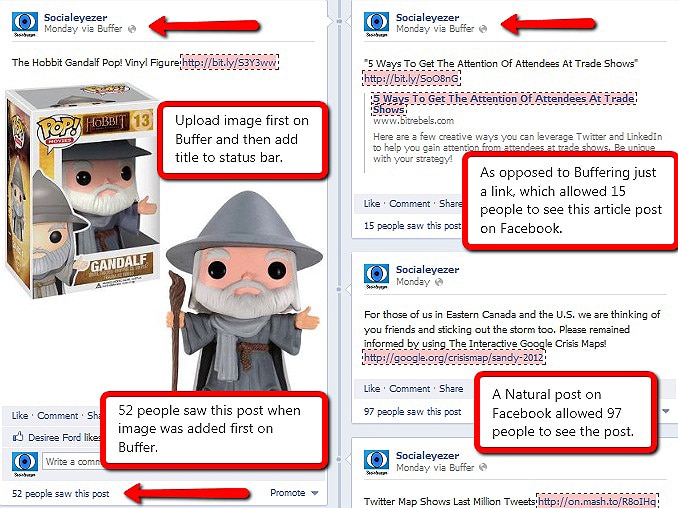The social tool, Buffer, is truly amazing at helping people with social media time management by sharing and scheduling content, which allows them to focus more on being social via the web or mobile device. Last month, I wrote articles on Social Media Examiner about 6 Free Mobile Apps To Enhance Your Social Media Marketing and on VentureBeat regarding How Social Tools Are Hurting Your Reach On Facebook, and I mentioned the Buffer app in both articles.
As you may know, recent changes the people at Facebook made to their algorithm caused how your Facebook reach will be viewed from social tools to decrease. Though this was a change Facebook made, many of us who rely heavily on third-party apps were being affected when not natively posting on Facebook.
To my surprise, the co-founder of Buffer, Leo Widrich, not only tweeted the articles the articles I wrote which mentioned Buffer, but he also sent me a warm and kind e-mail in response to my articles.
“Hi Erin,
I hope all is going well with you. Thanks so much for the two amazing posts recently both on Social Media Examiner and VentureBeat. You are absolutely right; unfortunately our posts on Facebook don’t get the same reach as native Facebook postings.One thing, that we found as a workaround here (which you have also mentioned in the post as a general Facebook best practice), is that you can simply share photos instead of links. It works very seamlessly via the browser extension; you can right click on any photo in a post and Buffer it.
This way if posted via Buffer, we’ve seen we get the same exposure as natively posted FB pictures. Is this something you’ve seen happening too?
Would love your expert opinion on this, thanks for all your hard work! :)
Best,
Leo Widrich
Co-Founder Buffer”
After reading Leo’s e-mail, I began testing the Buffer tool on the web and from my smartphone to follow-up on finding out if adding a picture first and then the link would help increase the reach on Facebook in particular (since this was the social site that was having issues with the third-party app). What I had discovered was a loop-hole where uploading a picture to the buffer dashboard and then adding a title and link would not affect its users as opposed to just adding a link.
Since this discovery, Leo connected with me on Twitter and Facebook where we could continue to stay in touch with one another. He also took my feedback on the Buffer app and dashboard and used the information to improve on the issue causing a deflation within reach and sent me yet another e-mail following up and following through.
“Subject: Your great feedback for sharing to Facebook with Buffer – Improved it today! :)
Hi Erin,
I hope you are doing well. It was really amazing to get your feedback on sharing links to Facebook through Buffer and we tried to vastly improve this today with a big update that has gone out one hour ago. If you share through Buffer now, links should appear just like Facebook native links can be shared and get incremental share count and should overall replicate the same experience as if sharing directly to Facebook!
Let me know if you give it a go and have any thoughts – it should be better than any other app that allows posting to FB right now.”
I was immediately impressed by Leo’s ability to not only reach out, but to admit to an issue with Buffer posting to Facebook and the decrease in reach. Not only did he choose to communicate with me, but he remained open-minded about what could have been taken as negative sentiment (although I had stated that it was Facebook not Buffer). Leo not only remains clearly on top of his Google Alerts regarding mentions about Buffer, he as the co-founder took initiative to try and find a solution.
He then took it a step further by following up after finding a solution to the problem that did not only affect me as an avid Buffer user, but that would help the masses who need assistance with time management when remaining continuously active on social media.
This is an amazing example of excellent customer service and a perfect learning experience for startups and other founders. Paying attention to your online sentiment is extremely important to remain informed about what is being said about your brand. It’s important to not only reach out (which is initially great) but also to allow others to have input and feedback that you appreciate and check to see if it is factual on your end, and if it is, admit it like Leo.
Making statements like “I will look into it” and actually following through is the key to true customer service. Unfortunately, many do not do this, which is why we can all learn from the co-founder of Buffer.
[Emails shared with Leo Widrichs’ permission]
Image Credits: [Socialize LA] [Partywirks]


COMMENTS